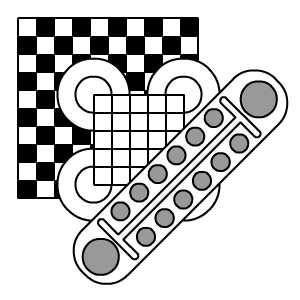| |

Board Game Studies Colloquium VIII
Abstracts
Ulrich Schadler and Anne Elizabeth Vaturi
NEW HISTORIES OF ANCIENT GAMES - THE FINDS FROM JIROFT
Until recently the history of the family of backgammon games could be traced
back to ancient Rome on the one hand and to ancient India on the other. The
Romans played a game called 'Ludus duodecim scriptorum' ('game of 12
points') already in the 2nd century BC. About the same time the game of the
'Ļaras', different from the Roman game but seemingly presenting other
affinities to the backgammon games, was known in India.
In 2000, the floodwaters of the Halil River in the southeastern iranian
province of Kerman uncovered the gravesites of Jiroft. Thousands of
offerings, mainly chlorite vessels, were removed from tombs dating to the
end of the third millennium BC. Among the spectacular finds, are two types
of board games.
One is identical in structure to the Roman ones: it consists of three rows
of 12 cells divided in the middle into two groups of six. Although until
today neither counters nor dice seem to have been found, it can be no doubt
that with these boards dating to about 2000 BC the history of backgammon is
twice as old as hitherto known. This group of games therefore becomes the
oldest game board still living.
The other boards reported from Jiroft are different examples of the game of
twenty squares, spread in Mesopotamia (Royal Game of Ur) and ancient Iran
(Shar-i Sokhta, Susa) since the mid-third millennium B.C. The artefacts from
Kerman, chlorite plaques in the shape of snakes, scorpions, and eagles,
renew our knowledge of this ancient game, especially in terms of
iconography.
|

